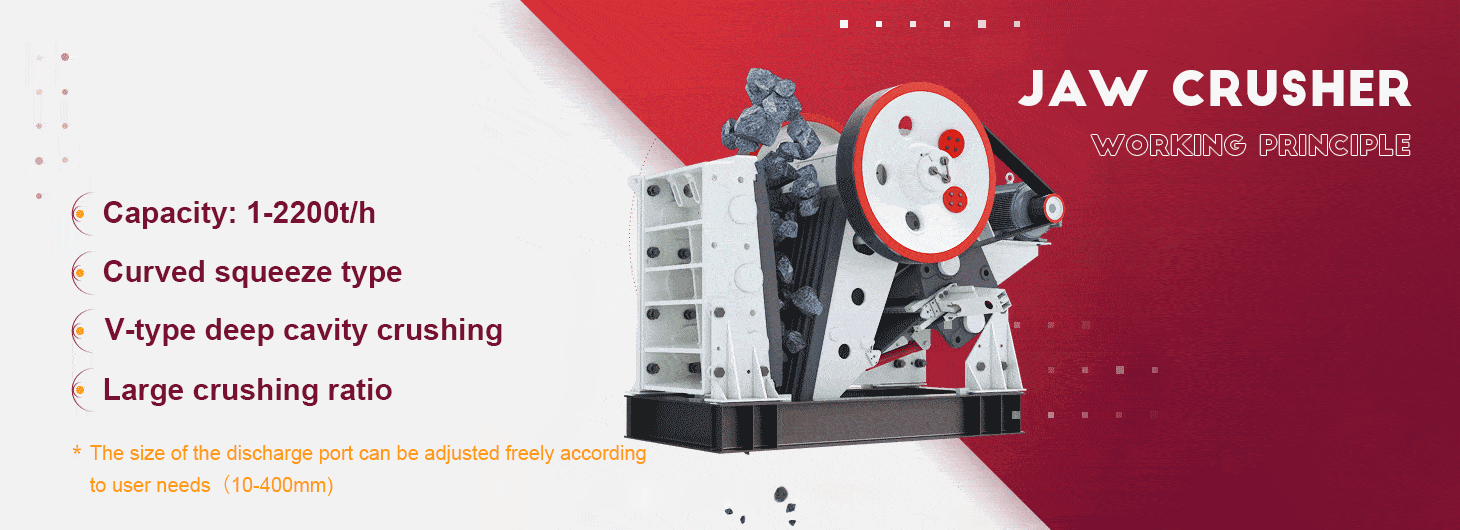Jaw crushers play a crucial role in the primary crushing of various materials in mining, construction, and other industries. Their performance and productivity are key factors in the overall efficiency of crushing operations. In this discussion, we will delve into the factors influencing jaw crusher performance and productivity, emphasizing key aspects that contribute to optimal operation.

- Design and Geometry: The design and geometry of a jaw crusher significantly impact its performance. The crusher’s geometry, including the chamber design, nip angle, and jaw plate kinematics, affects the crushing capabilities. A well-designed jaw crusher ensures efficient and effective crushing, leading to higher productivity.
- Crushing Chamber: The shape and depth of the crushing chamber play a vital role in determining the crusher’s capacity and performance. A larger chamber allows for a higher feed rate and better material crushing. However, an excessively large chamber may lead to inefficient crushing, so a balance must be struck to optimize performance.
- Jaw Plate Wear: The jaw plates are critical components that directly interact with the material being crushed. As the material passes through the crusher, the jaw plates wear out. Proper maintenance and timely replacement of worn jaw plates are essential to maintain optimal performance and productivity.
- Feed Size and Gradation: The size and gradation of the feed material have a direct impact on the crusher’s performance. The jaw crusher is designed to handle a certain maximum size of raw material, and variations in feed size can significantly affect the crusher’s output. Uniform feeding and proper sizing contribute to consistent performance.
- Closed Side Setting (CSS): The CSS is a crucial parameter that determines the product size distribution and, consequently, the crusher’s performance. A smaller CSS allows for finer crushing, but it may reduce the crusher’s capacity. Proper adjustment of the CSS is essential to balance between desired product size and overall productivity.
- Eccentric Shaft Speed: The speed of the eccentric shaft directly influences the crushing action and, subsequently, the crusher’s performance. Higher speeds generally result in finer product output but may sacrifice production rate. Finding the optimal balance between speed and production requirements is crucial for maximizing productivity.
- Power and Energy Consumption: Efficient crushers not only perform well but also consume energy effectively. High power utilization efficiency contributes to reduced operational costs and overall sustainability. Proper sizing of the motor and optimizing the crusher’s power consumption are essential for achieving peak performance.
- Automation and Control Systems: Modern jaw crushers often come equipped with advanced automation and control systems. These systems help monitor and adjust various parameters in real-time, ensuring consistent performance and productivity. Automation also contributes to operational safety and reduces the risk of equipment damage.
Jaw crusher performance and productivity are influenced by a combination of design, operational, and maintenance factors. Regular inspections, proper maintenance, and adherence to best practices are essential to ensure a jaw crusher operates at its full potential. Additionally, advancements in technology, such as automation and intelligent control systems, contribute to optimizing performance and improving overall productivity in the crushing process.
